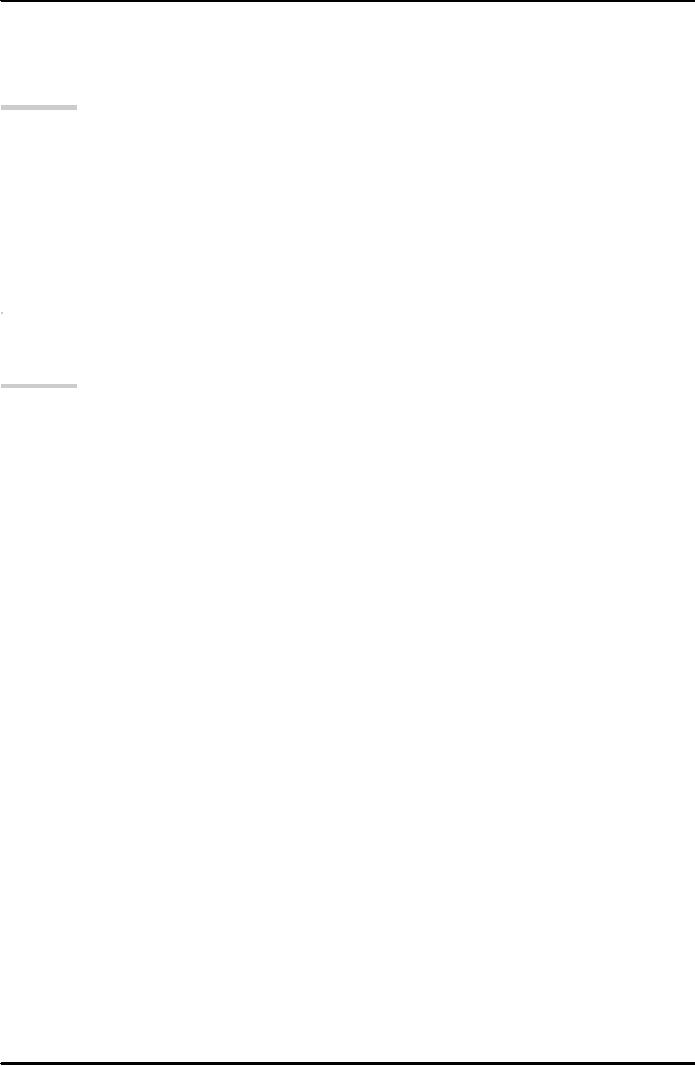 |

SME
Management (MGT-601)
VU
Lesson
24
All
businesses need sound
financial management and small
firms are no exception to
that rule. Proper
management
of account s with Performa cash
flows, profit and loss
accounts and balance sheets
are
essential
if a firm is to survive and prosper, as
is variance analysis comparing what
was planned and
with
what actually occurred.
Aspects
of Financial Management
�
Winning
the Cash Flow War.
�
Understanding
the Nature of Profit.
�
Breaking
Even.
�
Working
Capital Management.
WINNING
THE CASH FLOW WAR
Most
of the business founders think their
problems are over once
customer starts to roll in.
Unfortunately
they
may have only just
begun. One of the common characteristic
that new and small
businesses have in
common
is a tendency to change their
size and shape quickly. In
early weeks and months
customers are few
and
each customer mean a large
percentage increase in
sales.
A
large increase in sales in
turn means an increase in
raw material and perhaps
more wages and
other
expenses.
Generally these expenses are to be
met before your customer
pays up. But until the money
comes
in,
the business has to find
cash to meet its bills. If it cannot
find the cash to meet these
day to day bills the
business
very often goes bankrupt.
Bankers have a name for
it. They call it over trading. It
means taking on
more
business than you have the
cash to finance. Sales
growth is a natural to successful new
business as
physical
growth is to baby. And just as
baby runs out of clothes,
new businesses run out of
cash. The
following
measure will help you to
minimize the need for extra
cash to finance the sales
growth.
a
Send
Bills Out Promptly.
Have
a list of debtors, who owe
money must be chased up for
payment. It is good idea to
list the debtors
by
age of debt as this shows
who owes how much
and for how long.
Take non-nonsense approach
with
them
and stop suppliers to people
who take too long to
pay or threaten to sue.
b.
Check
Credit Ratings.
Before
taking on a new or big
customer have them checked
out. If they are blue-chip you
may be able to
factor
the debt and get up 80% of the
cash owed immediately. Alternatively,
offer discount for cash
and
charge
interest on over due
amount.
c.
Keep
Stock Levels
Down.
The
chances are that the opening
stock will be out of line
with customer demand. After
all, before the start
companies
have to guess what will
sell. Once a pattern develops to
emerge, order accordingly. Too
many
new
ventures spend all their
cash on opening
stock.
d.
Take
Credit.
As
rule of thumb successful
business men and women try
to take as much credit as
they are giving. So
if
their customers take a month
to pay, they aim to take a
month's credit from their
suppliers.
Understanding
the Nature of Profit
A
significant number of small business firms
operate largely on a cash
basis. That is, most of
their
transactions
and income come in either as
cheques or in folding notes.
While it is certainly very pleasant
to;
be
able to conduct your business
affairs in this way. Cash
can often give rise to
misleading signals.
The
whole
problem arises from the difference
between accounting definition of
Profit and
common-sense
definition
of cash. Cash and profits
are not same thing,
even in cash business, and a
business need both
cash
and profits to
survive.
69

SME
Management (MGT-601)
VU
To
make matters even more
confusing, there are at least
three sorts of profit to
keep track of. The
fundamental
difference between cash and
profits can best be explained under the
following heading.
a.
The
Realization Concept.
A
particularly prudent sales manager
once said that an order
was not an order until the
customer cheque
had
been cleared, had consumed
the product, had not died as a
result and finally, had
shown every
indication
of wanting to buy again. In accounting,
income is usually recognized as having
been earned when
the
goods (or services) are
dispatched and the invoice
sent out, not when an order
is receive, or on
assumption
of firm order, or expectation of prompt
payment.
If
it is possible that some of the products
dispatched may be returned at some later
date. This means that
income
and consequently profit can
be achieved in one period.
And have to be removed later
on.
Obviously,
if return can be estimated
accurately, then an adjustment
can be made to income at the
time.
b.
Cost
of Sale.
Obviously
the goods which have not
yet been dispatched must
still be held in stock. A
vital calculation is
that
of how much stock has
been used up over the
period. This is calculated by adding the
opening stock to
any
purchase you have made
and taking away the stock
that is left to get it
right.
Stock
used over a period = Opening
stock + purchases Ending
Stock.
The
materials used in business
are usually a major element of
expense and as such are
separated from the
rest
of expenses. For a manufacturing company
materials are easy to define.
For service business the sum
is
less
obvious, but still
necessary.
c.
Matching
Expenses.
Expense
is a general name given to the cost
incurred in selling marketing, administrating,
distributing and
advertising
a company's products or services. Some of
these expenses may be for
items not yet paid
for.
The
profit and loss account
sets out to "match" income
and expenditure to the period in which
they were
incurred.
Breaking
Even
While
a business has difficulty in
raising start-up capital paradoxically
one of the main reasons
small
businesses
fail in the early stages is
that too much start-up
capital used in buying fixed
assets. While some
equipment
is clearly essential at the start,
other purchase can be postponed. This
may mean "desirable"
and
labour
saving devices have to be
borrowed or hired for
specific period. This is not as
nice as having them to
handle
all the time. But if the photocopiers, minicomputers, typewriters
and even delivery vans
are
purchased
into business they may
become the part of fixed
cost. The higher the fixed
cost the longer it
usually
takes to reach breakeven and
then profitability. But
small business has to become
profitable
relatively
quickly or it will simply run
out of money and die.
Difficulties usually begin when people
become
confused
by different characteristics of
cost.
Fixed
cost is a
cost which remains fix in
total but varies per
unit of sales, e.g. rent of
the shop or salaries of
employees.
Variable
cost is a
cost varies in total but
remains fixed per unit of
sales, e.g. direct material, direct
labour.
Here
is an example; if rent is $10,000.The
angled line running from the
top of the fixed costs line
is the
variable
cost. In this example we plan to buy at
$3 per unit. so every unit
we sell adds that much to
our
assets.
Only one element is needed
to be calculated is breakeven point. We
plan to sell it out at $5
per unit.
So
this line is calculated by multiplying
the units sold by that
price.
The
breakeven point is the stage
when a business starts to
make a profit, when sales
revenue begins to
exceed
both fixed and variable
cost.
Breakeven
Point formula
Fixed
Costs=Selling PriceUnit Variable
Cost
70

SME
Management (MGT-601)
VU
Breakeven
Point = Fixed
Costs
Selling
Price Unit Variable
Cost
10,000
= 5,000 units
5-3
Profitable
Pricing
To
complete the breakeven picture we need to
add one further
dimension-profit.
It
is a mistake to think that
profit is an accident of arithmetic
calculated at the end of year. It is
specific and
quantifiable
target that you need at the
outset.
Breakeven
Profit Point Formula = Fixed
Costs + Profit Objective
Selling
Price Unit Variable
Cost
Let's
go back to our previous example. If
you expect a return of say
$4,000 then
Breakeven
Profit Point Formula = 10,000+ 4000 =
7,000units
53
71
Table of Contents:
- THE HISTORY:Cottage Industry, CONCEPT OF SMALL BUSINESS
- THE RELATIONSHIP BETWEEN SMALL AND BIG BUSINESS:The SME’S in Pakistan
- THE ROLE OF ENTREPRENEURSHIPS IN SMEs:Focus and Perseverance Guide the Entrepreneur
- THE ROLE OF ENTREPRENEURSHIPS IN SMEs:Kinds of Entrepreneurs
- SMALL ENTREPRENEURS IN PAKISTAN:National Approaches
- THE DEVELOPMENT OF SMES IN PAKISTAN:The Industrial History of Pakistan
- GOVERNMENT’S EFFORT TOWARDS SME DEVELOPMENT:Financing Programs
- THIS LECTURE DEFINES THE ROLE OF NGOS AND SMEDA:Mission Statement
- ISSUES AND POLICY DEVELOPMENT FOR SME:Monitoring Developments
- ISSUES IN SME DEVELOPMENT:Business Environment, Taxation Issues
- LABOR ISSUES:Delivery of Assistance and Access to Resources, Finance
- HUMAN RESOURCE DEVELOPMENT:Market and Industry Information, Monitoring Developments
- MARKET AND INDUSTRY INFORMATION:Measuring Our Success, Gender Development
- LONG TERM ISSUES:Law and Order, Intellectual Property Rights, Infrastructure
- THE START UP PROCESS OF A SMALL ENTERPRISE:Steps in Innovative Process
- TECHNICAL FEASIBILITY:Market Feasibility, Market Testing
- FINANCIAL FEASIBILITY:Financial resources and other costs, Cash Flow Analysis
- ASSESSMENT OF PERSONAL REQUIREMENTS AND ORGANIZATIONAL CAPABILITIES:Analysis of Competition
- Post Operative Problems of a New Enterprise:Environmental Causes
- HOW TO APPROACH LENDERS:Bank’s Lending Criteria, Specific Purpose, Be Well Prepared
- WHAT A BANK NEEDS TO KNOW ABOUT YOU:General Credentials, Financial Situation
- COMMERCIAL INFORMATION:Checklist for Feasibility Study, The Market
- GUARANTEES OR COLLATERAL YOU CAN OFFER:Typical Collateral
- Aspects of Financial Management:WINNING THE CASH FLOW WAR, The Realization Concept
- MEANING OF WORKING CAPITAL:Gross Working Capital, Net Working Capital
- RECRUITMENT, SELECTION AND TRAINING:Job Description, Job Specification
- SELECTION AND HIRING THE RIGHT CANDIDATE:Application Blank, Orientation
- TRAINGING AND DEVELOPMENT:Knowledge, Methods of Training
- CONDITIONS THAT STIMULATE LEARNING:Limitations of Performance Appraisal, Discipline
- QUALITY CONTROL:Two Aspects of Quality, Manufactured Quality
- QUALITY CONTROL:International Quality Standards, MARKETING
- MARKETING:Marketing Function, MARKETING PROCESS - STEPS
- MARKETING:Controllable Variable, Marketing Uncontrollable, Marketing Mix
- MARKETING:Demerits of Product Mix, Development of new product, SMEDA
- ROLE OF TECHNOLOGY:Training programmes, Publications
- ROLE OF TECHNOLOGY:Measure to Undertake for Promoting Framework.
- EXPORT POTENTIAL OF SME IN DEVELOPING COUNTRIES I:Commonly Seen Assistance Programme
- EXPORT POTENTIAL OF SME IN DEVELOPING Countries. II:At the national level
- WORLD TRADE ORGANIZATION (WTO):WTO Agreements: Salient Features
- WTO MINISTERIAL CONFERENCES:PAKISTAN AND WTO
- WORLD TRADE ORGANIZATION (WTO) PAKISTAN & WTO. II:International Treaties
- WORLD TRADE ORGANIZATION (WTO) PAKISTAN & WTO. III:Agriculture
- WORLD TRADE ORGANIZATION (WTO):PAKISTAN & WTO. III
- WORLD TRADE ORGANIZATION (WTO):CONCLUSIONS AND RECOMMENDATIONS
- SUMMARY & CONCLUSIONS:Financing Tool, Financing Tool